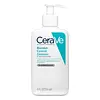What's inside
What's inside
 Key Ingredients
Key Ingredients

 Benefits
Benefits

 Concerns
Concerns

 Ingredients Side-by-side
Ingredients Side-by-side

Water
Skin ConditioningMyristic Acid
CleansingGlycerin
HumectantBehenic Acid
CleansingSodium Methyl Cocoyl Taurate
CleansingPalmitic Acid
EmollientPotassium Hydroxide
BufferingLauric Acid
CleansingStearic Acid
CleansingAnthemis Nobilis Flower Oil
MaskingMentha Viridis Leaf Oil
AstringentPelargonium Graveolens Flower Oil
MaskingLavandula Hybrida Oil
EmollientCitrus Aurantium Bergamia Fruit Oil
MaskingStyrax Benzoin Gum
MaskingLinalool
PerfumingLimonene
PerfumingTourmaline
Laminaria Saccharina Extract
Skin ProtectingHydrolyzed Wheat Protein
Skin ConditioningEthylhexylglycerin
Skin ConditioningTocopherol
AntioxidantCetearyl Alcohol
EmollientPolyquaternium-7
Butylene Glycol
HumectantDisodium EDTA
PEG-3 Distearate
EmulsifyingSodium Benzoate
MaskingPhenoxyethanol
PreservativeWater, Myristic Acid, Glycerin, Behenic Acid, Sodium Methyl Cocoyl Taurate, Palmitic Acid, Potassium Hydroxide, Lauric Acid, Stearic Acid, Anthemis Nobilis Flower Oil, Mentha Viridis Leaf Oil, Pelargonium Graveolens Flower Oil, Lavandula Hybrida Oil, Citrus Aurantium Bergamia Fruit Oil, Styrax Benzoin Gum, Linalool, Limonene, Tourmaline, Laminaria Saccharina Extract, Hydrolyzed Wheat Protein, Ethylhexylglycerin, Tocopherol, Cetearyl Alcohol, Polyquaternium-7, Butylene Glycol, Disodium EDTA, PEG-3 Distearate, Sodium Benzoate, Phenoxyethanol
Salicylic Acid 2%
MaskingWater
Skin ConditioningSodium Lauroyl Sarcosinate
CleansingCocamidopropyl Hydroxysultaine
CleansingGlycerin
HumectantNiacinamide
SmoothingGluconolactone
Skin ConditioningSodium Methyl Cocoyl Taurate
CleansingPEG-150 Pentaerythrityl Tetrastearate
EmulsifyingCeramide NP
Skin ConditioningCeramide AP
Skin ConditioningCeramide EOP
Skin ConditioningCarbomer
Emulsion StabilisingCalcium Gluconate
HumectantTriethyl Citrate
MaskingSodium Benzoate
MaskingSodium Hydroxide
BufferingSodium Lauroyl Lactylate
EmulsifyingCholesterol
EmollientTetrasodium EDTA
Caprylyl Glycol
EmollientHydrolyzed Hyaluronic Acid
HumectantTrisodium Ethylenediamine Disuccinate
Xanthan Gum
EmulsifyingHectorite
AbsorbentPhytosphingosine
Skin ConditioningBenzoic Acid
MaskingSalicylic Acid 2%, Water, Sodium Lauroyl Sarcosinate, Cocamidopropyl Hydroxysultaine, Glycerin, Niacinamide, Gluconolactone, Sodium Methyl Cocoyl Taurate, PEG-150 Pentaerythrityl Tetrastearate, Ceramide NP, Ceramide AP, Ceramide EOP, Carbomer, Calcium Gluconate, Triethyl Citrate, Sodium Benzoate, Sodium Hydroxide, Sodium Lauroyl Lactylate, Cholesterol, Tetrasodium EDTA, Caprylyl Glycol, Hydrolyzed Hyaluronic Acid, Trisodium Ethylenediamine Disuccinate, Xanthan Gum, Hectorite, Phytosphingosine, Benzoic Acid
 Reviews
Reviews

Ingredients Explained
These ingredients are found in both products.
Ingredients higher up in an ingredient list are typically present in a larger amount.
Glycerin is already naturally found in your skin. It helps moisturize and protect your skin.
A study from 2016 found glycerin to be more effective as a humectant than AHAs and hyaluronic acid.
As a humectant, it helps the skin stay hydrated by pulling moisture to your skin. The low molecular weight of glycerin allows it to pull moisture into the deeper layers of your skin.
Hydrated skin improves your skin barrier; Your skin barrier helps protect against irritants and bacteria.
Glycerin has also been found to have antimicrobial and antiviral properties. Due to these properties, glycerin is often used in wound and burn treatments.
In cosmetics, glycerin is usually derived from plants such as soybean or palm. However, it can also be sourced from animals, such as tallow or animal fat.
This ingredient is organic, colorless, odorless, and non-toxic.
Glycerin is the name for this ingredient in American English. British English uses Glycerol/Glycerine.
Learn more about GlycerinSodium Benzoate is a preservative. It's used in both cosmetic and food products to inhibit the growth of mold and bacteria. It is typically produced synthetically.
Both the US FDA and EU Health Committee have approved the use of sodium benzoate. In the US, levels of 0.1% (of the total product) are allowed.
Sodium benzoate works as a preservative by inhibiting the growth of bacteria inside of cells. It prevents the cell from fermenting a type of sugar using an enzyme called phosphofructokinase.
It is the salt of benzoic acid. Foods containing sodium benzoate include soda, salad dressings, condiments, fruit juices, wines, and snack foods.
Studies for using ascorbic acid and sodium benzoate in cosmetics are lacking, especially in skincare routines with multiple steps.
We always recommend speaking with a professional, such as a dermatologist, if you have any concerns.
Learn more about Sodium BenzoateThis gentle cleansing and foaming ingredient is known for leaving a smooth feeling in skin and hair. It is made using coconut oil.
According to the manufacturer, it is soluble in water and has resistance to hard water, acid, and alkali.
Due to its coconut base, it may not be Malassezia folliculitis safe.
Learn more about Sodium Methyl Cocoyl TaurateWater. It's the most common cosmetic ingredient of all. You'll usually see it at the top of ingredient lists, meaning that it makes up the largest part of the product.
So why is it so popular? Water most often acts as a solvent - this means that it helps dissolve other ingredients into the formulation.
You'll also recognize water as that liquid we all need to stay alive. If you see this, drink a glass of water. Stay hydrated!
Learn more about Water